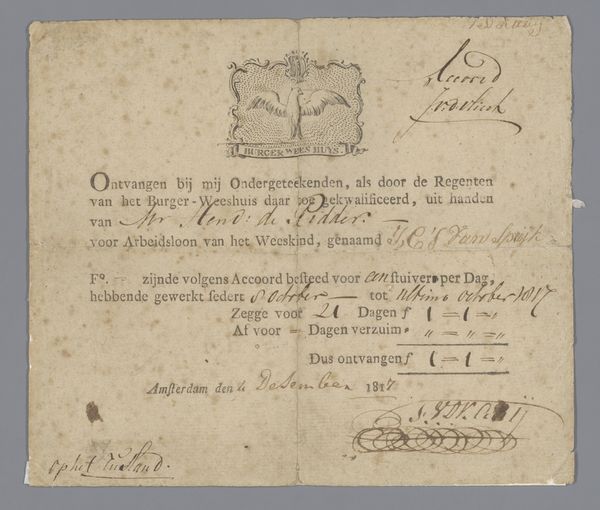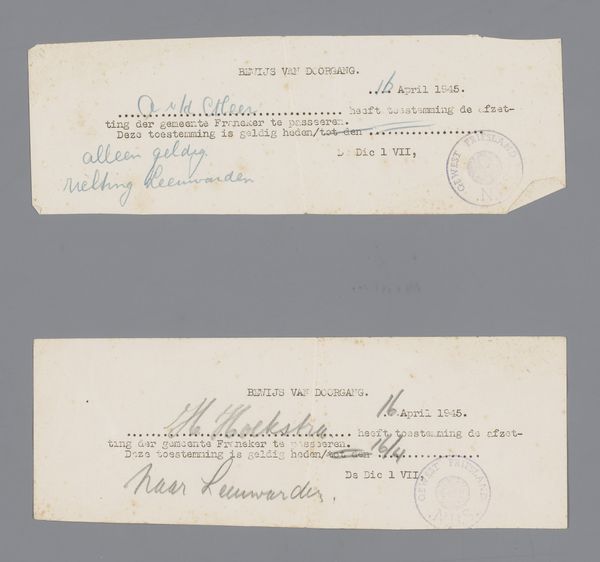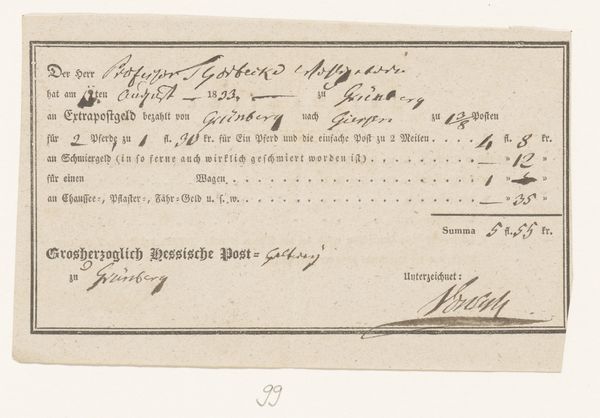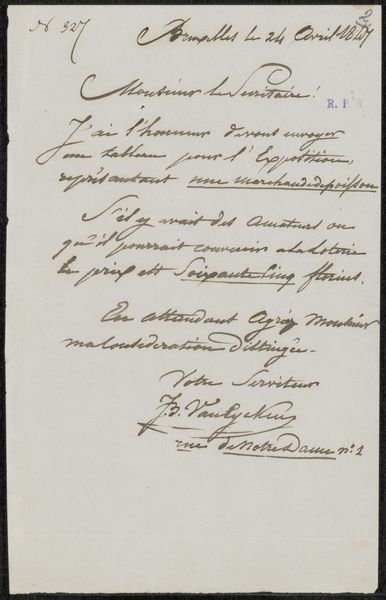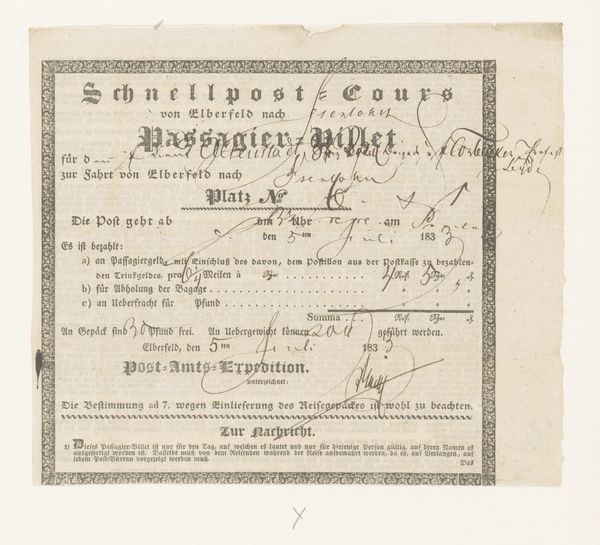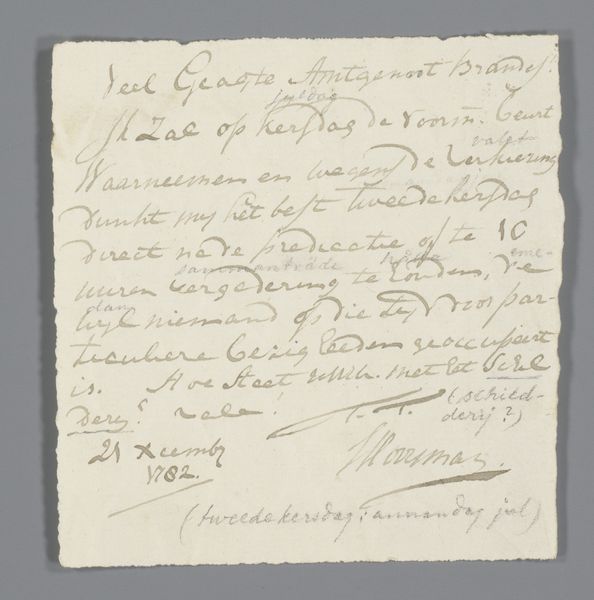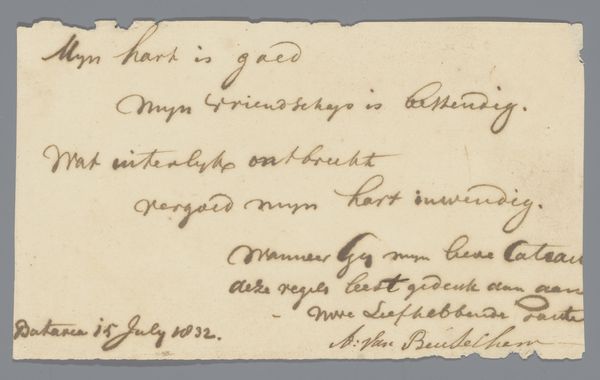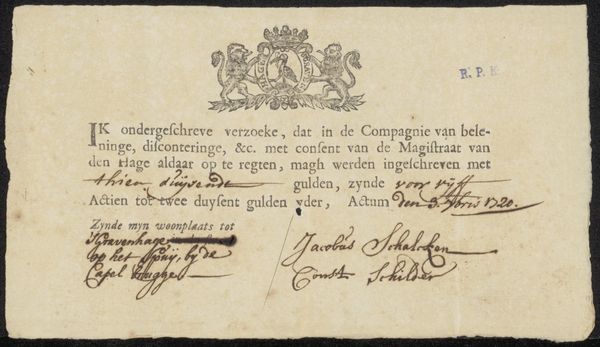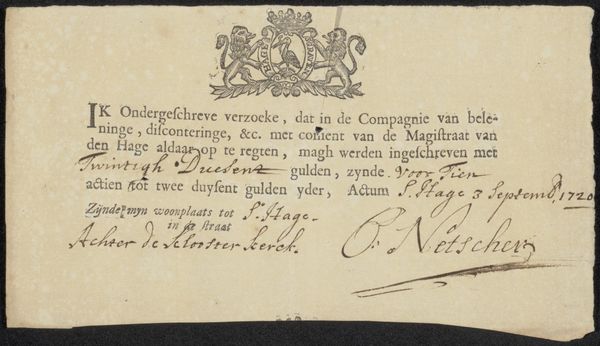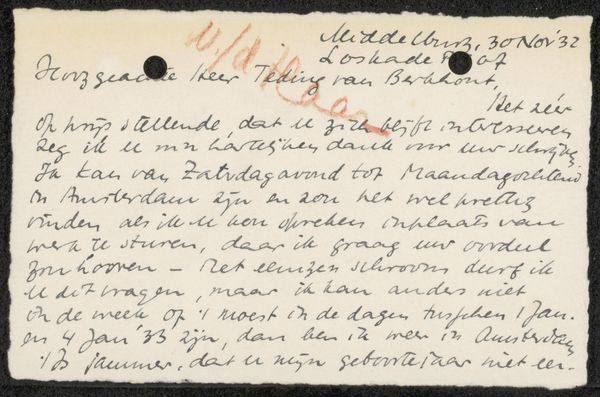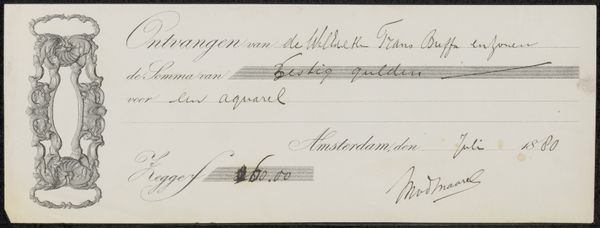
Provisioneel recipisse ter waarde van 4 gulden en tien stuivers, nr. 828 uitgegeven op 9 mei 1795 te Brielle uit naam van de Raad der Gemeente van de Stad Brielle ter inwisseling voor Hollandse provinciale recepissen Possibly 1795
0:00
0:00
drawing, print, paper, typography
#
drawing
#
aged paper
#
homemade paper
#
script typography
#
neoclassicism
# print
#
hand drawn type
#
paper
#
personal sketchbook
#
typography
#
fading type
#
stylized text
#
thick font
#
design on paper
#
historical font
Dimensions: height 10.2 cm, width 16.9 cm
Copyright: Rijks Museum: Open Domain
This receipt, issued in Brielle on May 9, 1795, is a window into a complex moment of economic transition. Made of paper, a relatively novel and increasingly accessible material at the time, it represents a value of four gulden and ten stuivers. The printing process itself, likely done with a movable type press, speaks to the rise of standardized production and distribution of information, as does the handwriting. This wasn't some unique work of art; it was part of a system. In that light, consider the labor involved: the paper makers, the typesetters, the officials who signed their names. Each had a role in this financial ecosystem. The receipt promised redemption for provincial notes, reflecting a move towards more abstract forms of capital. It represents a pivotal moment in the shift from tangible goods to financial instruments. Looking at this simple piece of paper, we begin to understand the intimate connection between material culture, labor, and the evolving landscape of early capitalism.
Comments
No comments
Be the first to comment and join the conversation on the ultimate creative platform.
